NAT 10.0%
Incumbent MP
Thomas George, since 1999.
Geography
Northern NSW. The seat of Lismore covers most of Lismore council area, most of Kyogle council area, and parts of Tweed, Byron, Richmond Valley and Tenterfield council areas. The seat covers the towns of Lismore and Murwillumbah.
History
The seat of Lismore was first created in 1894, and has existed for most of that period, and continuously since 1927. It has been dominated by the Country/National Party since 1927.
The seat first existed from 1894 to 1904, when it was abolished. It was restored in 1913, but in 1920 it was merged with the neighbouring seat of Byron. Byron became a three-member district covering the former districts of Byron, Clarence and Lismore.
In 1927, Lismore was restored, and was won by Country Party candidate William Missingham, who had held one of the seats in Byron since 1922. Missingham held the seat until his death in 1933.
At the 1933 Lismore by-election, the seat was won by William Frith, one of three Country Party candidates standing. Firth held the seat until the 1953 election. As he had turned 70 prior to that election, Country Party rules allowed multiple candidates to stand, and Frith was defeated by fellow Country Party candidate Jack Easter.
Easter retained his seat with ease in 1956. At the 1959 election, he was challenged by independent candidate Clyde Campbell, and held onto the seat by only two votes. A court decision saw a Lismore by-election called for later in 1959.
At the by-election, Campbell and Easter were both endorsed by the Country Party. The ALP ran Keith Compton, who won 47% of the primary vote. Despite the two Country Party candidates polling a majority of the vote, enough of Campbell’s preferences leaked to Compton to give him the seat.
Compton retained the seat in 1962, and lost in 1965 to Country Party candidate Bruce Duncan.
Duncan held the seat throughout the 1970s as the party became the National Country Party. In 1982, the party changed its name to the National Party. Duncan objected to the name change, and resigned from the party. While he sat as an independent, he was not opposed by the National Party in 1984, when he was re-elected as an independent. He retired at the 1988 election.
Bill Rixon won Lismore for the National Party in 1988. He held it comfortably over the next decade, and retired in 1999. He was succeeded in Lismore by fellow National Thomas George. George was re-elected in Lismore at the 2003 and 2007 elections.
Candidates
- Thomas George (Nationals)
- Andrew Moy (Labor)
- Margaret Kay (Christian Democratic Party)
- Russell Kilarney (Independent)
- Susan Stock (Greens)
Political situation
Lismore is a safe seat for the Nationals.
2007 result
| Candidate | Party | Votes | % | Swing |
| Thomas George | NAT | 23,620 | 54.2 | +3.4 |
| Peter Lanyon | ALP | 11,155 | 25.6 | -1.9 |
| Andy Gough | GRN | 7,726 | 17.7 | +0.6 |
| Julia Melland | DEM | 1,086 | 2.5 | +1.0 |
2007 two-candidate-preferred result
| Candidate | Party | Votes | % | Swing |
| Thomas George | NAT | 24,505 | 60.0 | +1.8 |
| Peter Lanyon | ALP | 16,340 | 40.0 | -1.8 |
Booth breakdown
Booths in Lismore have been divided into four areas. Those booths in Tweed Shire have been grouped as “Tweed”. Those booths in Kyogle, Richmond Valley and Tenterfield council areas have been grouped as “West”. The majority of the seat’s population lies in Lismore local government area. These booths have been divided between the south, which includes the Lismore urban area, and the north, which includes towns such as Nimbin. The two booths in Byron Shire have been grouped with Lismore North.
The Nationals two-party-preferred majority over the ALP varied from 67.5% in the west to 53% in Tweed. In Lismore North, however, the ALP gained a two-party majority of almost 54%. According to primary votes, however, the ALP came a distant third in Lismore North, with the Nationals polling 39.2% and the Greens polling 36.4%. The Greens received a majority of primary votes in five booths in this area, and won a plurality in another booth.
The Greens polled 19.3% in Tweed, and 12-13% in the other parts of the seat.
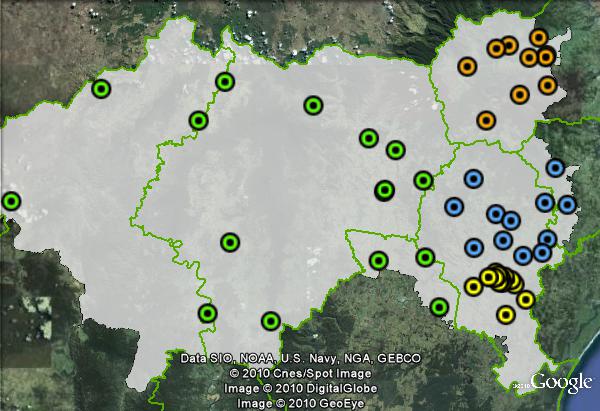
| Voter group | GRN % | NAT 2CP % | Total votes | % of votes |
| Lismore South | 13.1 | 62.9 | 16,976 | 38.9 |
| Tweed | 19.3 | 53.3 | 6,811 | 15.6 |
| West | 12.3 | 67.5 | 5,964 | 13.7 |
| Lismore North | 36.4 | 46.1 | 5,660 | 13.0 |
| Other votes | 17.1 | 65.8 | 8,176 | 18.8 |
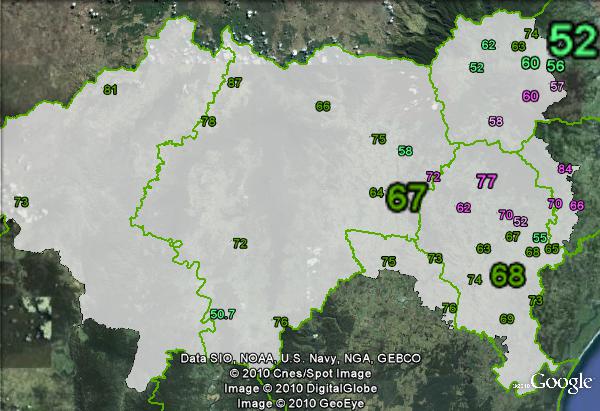
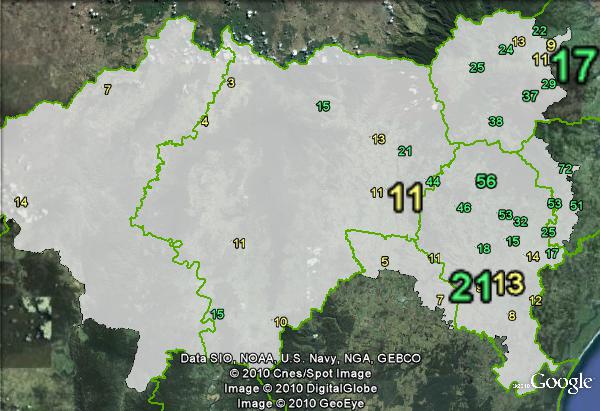
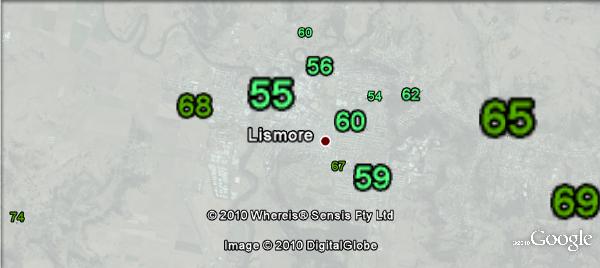
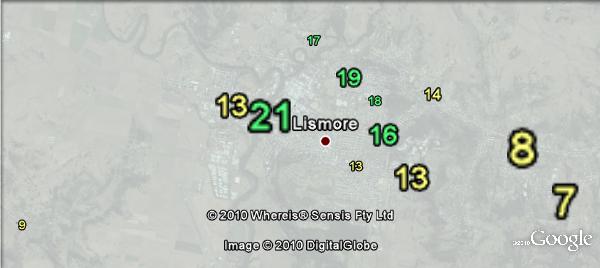


This seat contains the Greens’ 3 best booths anywhere in Australia in terms of % of the House of Reps vote at the 2010 federal election (though one of those booths isn’t used at state level).
Andy Moy, from Collins Creek, north of Kyogle, is the the confirmed ALP candidate.
Susan Stock holds degrees in town planning, education, visual arts and librarianship and is the assistant editor of the Nimbin GoodTimes community newspaper. Before moving to the north coast she was a member of Leichhardt Council and stood as the Greens candidate in the federal seat of Sydney in 1996.
As with neighbouring Ballina, there is a massive contrast between federal and state voting trends here. This would also be a safe Labor seat based on federal results. The two 2,000+ vote booths in Goonellabah were won by Thomas George with over 60% of the primary vote in 2007, but Labor won both booths at the last federal election, and received a plurality in both booths at the last local government elections.
As with Ballina, Labor haven’t run strong campaigns here in recent state elections. Thomas George has established a very entrenched position, but when he retires this seat may get quite interesting, and may also become winnable for the Greens if they can overtake Labor this year.
Just got Thomas George’s postal voting application form. It has a map of the electorate on the back, which is taken from the Elections NSW website. However, I’m surprised no one from the Nats noticed that the map is incorrect. It incorrectly shows Bangalow being in the electorate. Would’ve thought the sitting MP and his team would’ve been more familiar with the electorate boundaries and noticed it.
By contrast the Greens campaign team noticed the error and contacted Elections NSW about it last October.
Nick C – good to see the local co-alition member being very proficient nonetheless.
Just noticed one booth as a 72% primary for the Greens, is it a hippie commune?
The CDP are running Margaret Kay.
My prediction: National retain, 10-12% swing with the Greens finishing second.
Independent Russell Kilarney is a retained firefighter from Murwillumbah, and is preferencing the Greens (for what that’s worth). I don’t believe he has a website, but here is a link to a news report on his candidacy.
I should’ve also added that, for whatever it’s worth, Labor is also preferencing the Greens here.